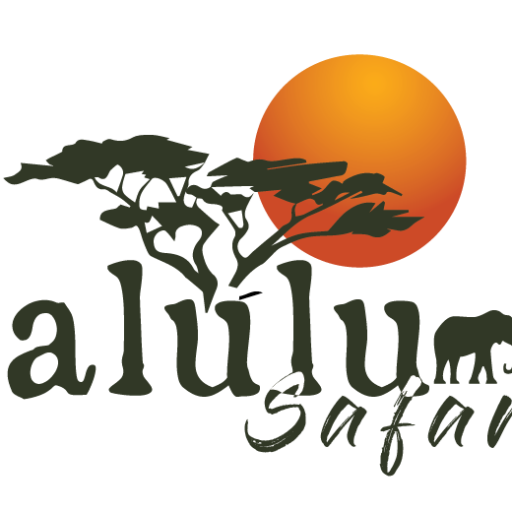Kilimanjaro’s Best-Kept Secrets: Insider Tips for a Successful Climb
Kilimanjaro climb tips
are essential for anyone looking to conquer Africa’s tallest peak. This 5,895-meter giant presents an incredible adventure for climbers from all over the world. While scaling it is physically demanding, there are Kilimanjaro climb tips from experienced climbers and guides that can help ensure a successful ascent. With preparation, the right mindset, and these insider suggestions, your Kilimanjaro experience can be smoother, safer, and even more rewarding. By following these Kilimanjaro climb tips, you’ll be better equipped to tackle one of the world’s most iconic challenges.
1. Choose the Right Route for You
Selecting the best route for your skill level, time frame, and expectations is one of the most important decisions you’ll make. Each route has unique characteristics:
- Lemosho Route: Ideal for beautiful scenery and a slower ascent, with plenty of acclimatization opportunities.
- Machame Route: Known for its diverse landscapes, this popular route offers gradual acclimatization and a high success rate.
- Rongai Route: A quieter route approaching from the north, offering a moderate difficulty level and a drier climate.
Each route varies in difficulty and duration, so work with your guide to pick the best one for your goals.
2. Pace Yourself: Go “Pole Pole”
The Swahili term “pole pole,” meaning “slowly, slowly,” is one of the most important pieces of advice for a Kilimanjaro climb. Many climbers struggle with altitude sickness due to rapid ascents, so it’s crucial to walk at a slow, steady pace to allow your body to adjust to the decreasing oxygen levels. Experienced guides emphasize that slow, rhythmic hiking significantly increases your chances of summiting successfully.
3. Stay Hydrated and Fuel Your Body Properly
Dehydration worsens altitude sickness symptoms, so aim to drink at least 3 to 4 liters of water per day. Your guide will encourage regular breaks to hydrate, so take advantage of every opportunity to sip water. Additionally:
- Electrolytes: Add electrolytes or hydration tablets to your water to replenish lost minerals.
- Fuel Up: Prioritize complex carbs and protein at every meal to keep your energy levels up for long days on the trail.
Experienced climbers often recommend keeping energy bars or snacks on hand for a quick boost during tough sections of the climb.
4. Use the Power of Acclimatization Days
Choosing a route that includes extra acclimatization days is one of the best ways to improve your chances of reaching the summit. Taking extra time allows your body to adjust more gradually, reducing the risk of altitude sickness. Consider adding one or two extra nights at mid-elevation points if your schedule allows. The time spent at higher altitudes prepares you for the ascent on summit night.
5. Choose the Right Gear for All Conditions
The weather on Kilimanjaro is unpredictable, with conditions ranging from warm and humid in the rainforest zone to freezing at the summit. A well-planned layering system is crucial:
- Base Layers: Moisture-wicking tops and bottoms.
- Mid Layers: Fleece jackets or insulated down for warmth.
- Outer Layers: Waterproof jackets and pants to protect against rain and wind.
- Accessories: Gloves, a warm hat, a balaclava, and sunglasses for summit day.
Invest in quality gear, especially a sleeping bag rated for sub-zero temperatures, as the cold can become intense at higher altitudes.
6. Prepare Mentally for Summit Night
Summit night is the most challenging part of the Kilimanjaro climb. It’s cold, dark, and physically exhausting, requiring a midnight start to reach Uhuru Peak by sunrise. Mental resilience is as important as physical fitness at this stage:
- Visualize Success: Many climbers use visualization to prepare for the tough ascent.
- Stay Positive: Remind yourself why you’re on this journey. Focus on each step rather than how much remains.
- Climb with a Mantra: Repeating a mantra or positive affirmation can provide focus and motivation during the toughest parts of the climb.
7. Manage Altitude Sickness Proactively
Altitude sickness can strike even the fittest climbers. Mild symptoms, such as headaches and nausea, are common, but knowing how to manage them can make all the difference:
- Stay Hydrated: Drinking water helps alleviate headaches and fatigue.
- Take It Slow: Going “pole pole” is key to giving your body time to adapt.
- Consider Medication: Talk to your doctor about taking acetazolamide (Diamox) or other altitude medications. Be sure to try it out before the climb, as some people experience side effects.
- Listen to Your Body: If you experience severe symptoms, communicate with your guide. It’s crucial to prioritize safety over summiting.
8. Choose a Reliable Team of Guides and Porters
Experienced, reputable guides and support staff make a significant difference in your Kilimanjaro experience. Choose a company like Kalulu Safaris that’s committed to responsible tourism, respects porter welfare, and ensures guides are knowledgeable and well-trained in safety procedures.
Guides will help monitor altitude sickness symptoms, offer encouragement, and share cultural insights, making your climb safer and more enjoyable.
9. Get a Head Start with Fitness Training
While Kilimanjaro doesn’t require technical climbing skills, it does demand strong endurance and leg strength. Training should begin at least three to six months before your climb:
- Cardio Workouts: Running, hiking, cycling, or swimming help build stamina.
- Strength Training: Exercises that target your legs and core—like squats, lunges, and planks—are crucial.
- Practice Hiking: Regular hikes, ideally with a loaded backpack, simulate the experience and help you get comfortable with the weight you’ll be carrying.
10. Celebrate Each Small Victory
Remember that Kilimanjaro is a journey to be enjoyed, not just a summit to conquer. Each zone you pass brings unique ecosystems and breathtaking scenery, from lush rainforests to alpine deserts and glacial landscapes. By appreciating each moment, taking in the beauty, and reflecting on how far you’ve come, you’ll stay motivated for the final push to the summit.
In Conclusion
Climbing Kilimanjaro is an awe-inspiring journey that offers physical and mental challenges but immense rewards. By following these Mount Kilimanjaro climb tips, you’ll have a better chance of successfully reaching the summit and experiencing one of the world’s most iconic treks.
To make the most of your adventure, ensure you are well-prepared with these Mount Kilimanjaro climb tips. Start by choosing the right route, as each path has unique features that can significantly impact your experience. Additionally, these Mount Kilimanjaro climb tips emphasize the importance of acclimatization, hydration, and pacing yourself to avoid altitude sickness.
With Kalulu Safaris, you’ll be in the hands of experienced guides who provide support, safety, and cultural insights along the way. A key piece of advice from the top Mount Kilimanjaro climb tips is to invest in proper gear for varying weather conditions, including layers and a warm sleeping bag.
For those preparing physically, these Mount Kilimanjaro climb tips recommend endurance training, strength exercises, and practice hikes to simulate trail conditions. Summit night, often the most challenging part, demands mental resilience. Using these Mount Kilimanjaro climb tips to visualize success and maintain a positive mindset can make a significant difference.
Altitude sickness is a concern for all climbers, but following the best Mount Kilimanjaro climb tips, like staying hydrated, walking “pole pole” (slowly, slowly), and listening to your body, can reduce risks. Guides will monitor your health closely, ensuring you follow essential Mount Kilimanjaro climb tips for a safe ascent.
Remember, climbing is not just about reaching the summit; it’s about enjoying the journey. These Mount Kilimanjaro climb tips encourage you to celebrate each zone, from lush rainforests to alpine deserts, making every step memorable.
Are you ready to conquer Kilimanjaro? By applying these Mount Kilimanjaro climb tips, you’ll be well-prepared for an adventure of a lifetime. From preparation to the final ascent, let these Mount Kilimanjaro climb tips guide you to a successful summit and unforgettable memories.

